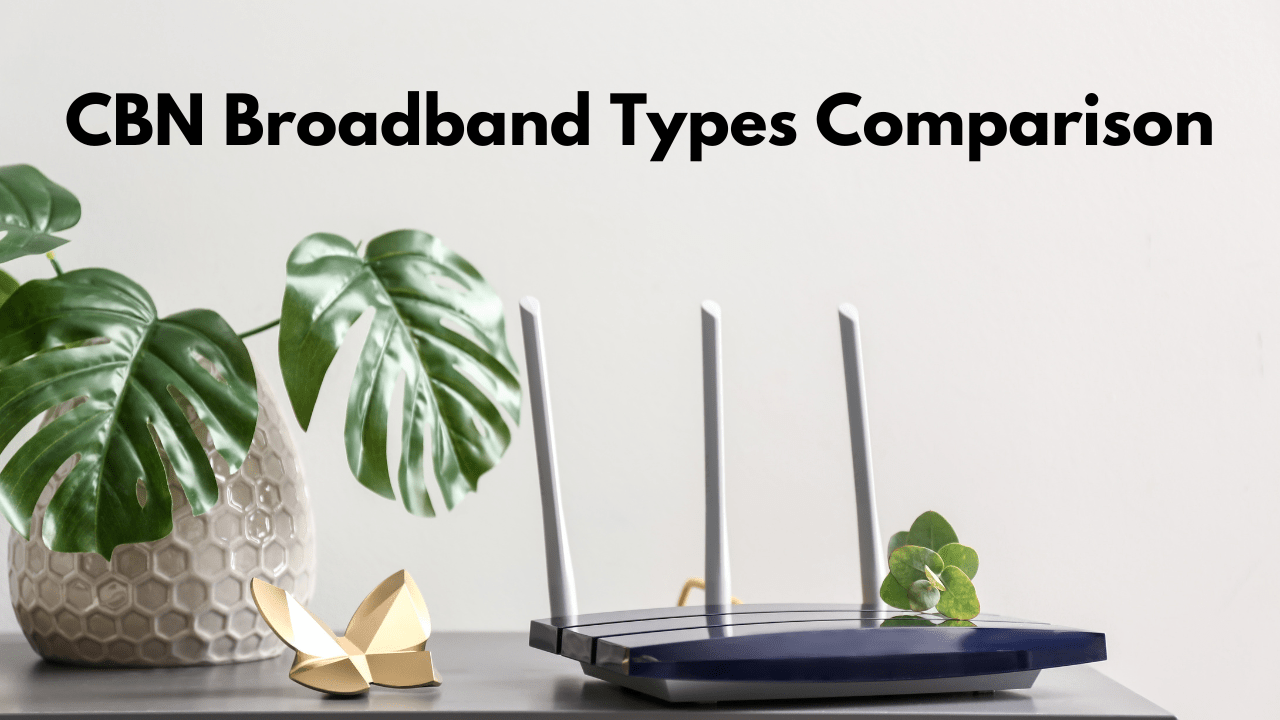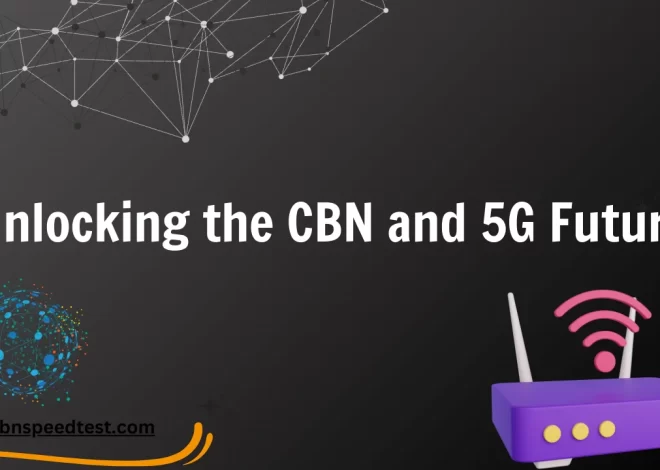
How Does CBN Broadband Compare: Fiber vs. DSL vs. Cable?
Welcome to our comprehensive guide on CBN broadband types comparison. With so many options available, it can be challenging to determine which type of broadband is best suited for your needs. In this article, we’ll compare the three main types of CBN broadband: fiber, DSL, and cable. We’ll explore the characteristics, advantages, and limitations of each option, so you can make a well-informed decision about the best broadband type for your CBN internet usage.
Key Takeaways:
- CBN offers three primary broadband options: fiber, DSL, and cable.
- Fiber optic broadband is known for its speed, reliability, and scalability.
- DSL broadband is widely available and offers a lower cost option for CBN internet users.
- Cable broadband is another widely available option that provides fast download speeds but can suffer from reduced performance during peak usage times.
- When selecting the best broadband type for your needs, it’s important to consider factors like speed requirements, budget, and future scalability.
Understanding Fiber Optic Broadband:
Fiber optic broadband is quickly becoming the gold standard for internet connectivity, offering unmatched speed, reliability, and scalability. Unlike traditional copper wire connections used by DSL and cable internet providers, fiber optic broadband uses thin strands of glass or plastic to transmit data as pulses of light, resulting in super-fast download and upload speeds.
One of the primary benefits of fiber optics is its ability to carry large amounts of data over long distances without losing signal strength. This means that fiber optic broadband is not only faster than DSL and cable internet, but it is also more reliable and consistent, even during peak usage hours.
In addition to its speed and reliability, fiber optic broadband is also highly secure and less susceptible to interference from electromagnetic fields and other sources of signal interference.
The Advantages of Fiber Optic Broadband:
| Advantage | Description |
|---|---|
| Fast Speeds | Fiber optic broadband can deliver download speeds of up to 1 Gbps, which is much faster than DSL or cable internet. |
| Reliable Connection | Since fiber optic broadband relies on light rather than electricity to transmit data, it is not affected by electrical interference and provides a stable connection. |
| Scalability | Fiber optic broadband can easily scale up or down to meet changing bandwidth requirements, making it an ideal choice for businesses and large households. |
| Low Latency | Fiber optic broadband has low latency, which means that data can be transmitted quickly and without delay. |
Overall, fiber optic broadband is an excellent choice for those who require lightning-fast speeds and a reliable, secure connection for streaming, gaming, and other bandwidth-intensive activities. However, it may not be available or affordable in all areas, so it’s important to check with your CBN broadband provider to see if fiber optic broadband is an option for your location.
Exploring DSL Broadband:
DSL, or Digital Subscriber Line, is a type of broadband internet that uses existing telephone lines to transmit data. Compared to fiber optic broadband, DSL operates at slower speeds, but it is generally more affordable and widely available.
One of the advantages of DSL is that it does not require additional infrastructure to be installed, making it a cost-effective option for areas that may not have access to other broadband types. However, the speed of DSL can be affected by the distance between the user’s location and the telephone exchange, and the quality of the telephone line.
Compared to cable broadband, DSL can be less reliable during peak usage times, when more people are online and sharing bandwidth. Additionally, DSL speeds tend to be slower than cable broadband, making it less suitable for households with multiple users or those who need to download or upload large files frequently.
While DSL may not offer the highest speeds available, it can be a viable option for those who primarily use their internet for basic tasks such as web browsing and email. When choosing a broadband type for CBN internet, it’s essential to take into account individual usage habits, budget, and available infrastructure in the area.
Unveiling Cable Broadband:
Cable broadband is a popular option for CBN internet users due to its widespread availability and consistent speeds. This type of broadband uses a coaxial cable network to transmit data, which is the same technology used for cable television.
One of the primary advantages of cable broadband is its speed. It can provide users with faster download and upload speeds than DSL, and comparable speeds to fiber optic broadband. Additionally, cable broadband is often less expensive than fiber optic broadband, making it an attractive option for those on a budget.
| Pros | Cons |
|---|---|
| Widespread availability in CBN service areas | Shared bandwidth with other users in the same area could lead to slower speeds during peak hours |
| Fast download and upload speeds | Slower upload speeds compared to fiber optic broadband |
| Less expensive than fiber optic broadband | Connection speeds can be affected by distance from the cable provider’s central office |
One potential downside of cable broadband is that its speeds can be affected by the number of users in a particular area. This is because cable broadband operates on a shared network, meaning that bandwidth is divided among all users on the same network. This can result in slower speeds during peak usage times.
Another consideration when choosing cable broadband is its distance limitations. Users who are located too far from the cable provider’s central office may experience slower speeds, as the signal weakens over distance.
Compared to DSL broadband, cable broadband is often faster and more reliable. However, it may not be as fast or reliable as fiber optic broadband, which is a consideration for users with high-speed needs or large families with multiple devices.
Comparing CBN Broadband Types – Fiber, DSL, and Cable:
When it comes to CBN broadband types, there are three main options to consider: fiber, DSL, and cable. Each type has its own characteristics, benefits, and limitations. Understanding the differences between them can help you make an informed decision about which type of broadband is the best fit for your CBN internet needs.
| Feature | Fiber Optic Broadband | DSL Broadband | Cable Broadband |
|---|---|---|---|
| Speed | Faster | Slower than fiber | Slower than fiber but faster than DSL |
| Reliability | Highly reliable | Moderately reliable | Moderately reliable |
| Pricing | Expensive | Affordable | Moderately priced |
| Availability | Not widely available | Widely available | Widely available |
Speed: Fiber optic broadband is typically the fastest option, offering speeds of up to 1 Gbps. DSL is slower than fiber but faster than cable. Cable broadband falls somewhere in the middle, offering speeds of up to 300 Mbps, depending on the plan.
Reliability: Fiber optic broadband is highly reliable due to its technology, which uses glass fibers to transmit data. DSL and cable broadband are moderately reliable but may experience disruptions during peak usage times or due to weather conditions.
Pricing: Fiber optic broadband is the most expensive option due to its high speeds and reliability. DSL is generally more affordable, while cable broadband is moderately priced and often bundled with other services like cable TV and phone.
Availability: Fiber optic broadband is not widely available, as it requires infrastructure upgrades and installation. DSL and cable broadband are widely available in many areas.
Overall, when comparing CBN broadband types, it’s important to consider factors like your internet usage requirements, budget, and location. While fiber optic broadband may be the ideal choice for some users, it may not be available or cost-effective for others. Similarly, DSL and cable broadband have their own advantages and limitations.
Factors to Consider When Choosing CBN Broadband:
When deciding on the best CBN broadband type for your internet usage, it’s important to consider several factors. These include:
- Speed requirements: Determine how fast you need your internet connection to be. Fiber optic is the fastest, followed by cable, and then DSL. If you need high-speed internet with no interruptions, fiber optic is the way to go.
- Budget: Consider your budget and how much you’re willing to spend on your internet connection. Fiber optic is generally more expensive than DSL and cable.
- Customer support: Evaluate the quality of customer support provided by the broadband provider you choose. Look for a company with responsive and helpful customer service.
- Future scalability: Consider your future needs, such as expanding your business or adding more devices to your network. Choose a broadband type that can meet your future demands.
By taking into account these factors, you can make an informed decision about which CBN broadband type will best suit your needs. Whether you prioritize speed, affordability, or future scalability, there’s a broadband type that can meet your specific requirements.
Conclusion:
Choosing the right broadband type is essential for enjoying fast, reliable, and affordable internet services from CBN. Throughout this article, we have explored the main broadband types – fiber, DSL, and cable – and analyzed their respective features, pros, and cons.
In conclusion, when considering the best broadband type for your CBN internet usage, it’s crucial to determine your specific needs, including speed requirements, budget, and future scalability. This will enable you to evaluate each broadband type based on factors such as speed, availability, pricing, and customer support, and choose the option that suits your requirements.
Remember to weigh the pros and cons of each option before making your final decision. By doing so, you will guarantee that you select a CBN broadband type that offers the best value for your money and supports your internet needs for the foreseeable future.
FAQ!
How does CBN Broadband compare: Fiber vs. DSL vs. Cable?
CBN Broadband offers three main types of internet connections – fiber, DSL, and cable. Fiber optic broadband provides the fastest and most reliable speeds, while DSL and cable offer more affordable options. The choice ultimately depends on your specific needs and budget.
What is fiber optic broadband?
Fiber optic broadband uses thin strands of glass or plastic to transmit data at high speeds using light. It offers faster and more reliable internet connections compared to DSL and cable, making it an ideal choice for users who require high bandwidth for activities like streaming, gaming, or large file transfers.
What are the advantages of DSL broadband?
DSL broadband, also known as Digital Subscriber Line, uses existing telephone lines to provide internet connectivity. It is widely available and more affordable than fiber optic broadband. While DSL speeds may not match those of fiber optic, it is still suitable for most everyday internet activities like browsing, email, and video streaming.
How does cable broadband compare to other types?
Cable broadband uses coaxial cables to deliver internet connections. It offers faster speeds compared to DSL and is often more widely available. Cable broadband is suitable for users who require fast internet speeds for activities like streaming, online gaming, and downloading large files.
How do I decide which CBN broadband type is best for me?
When choosing the best CBN broadband type for your needs, consider factors such as required internet speed, budget, availability in your area, and the specific activities you plan to use the internet for. Assessing these factors will help you make an informed decision on which type of broadband is the most suitable for you.
What factors should I consider when selecting CBN broadband?
When selecting CBN broadband, it’s important to consider factors such as your required internet speed, budget, customer support, and future scalability. Think about your current and future internet needs to ensure that the broadband type you choose can meet your requirements in the long term.


